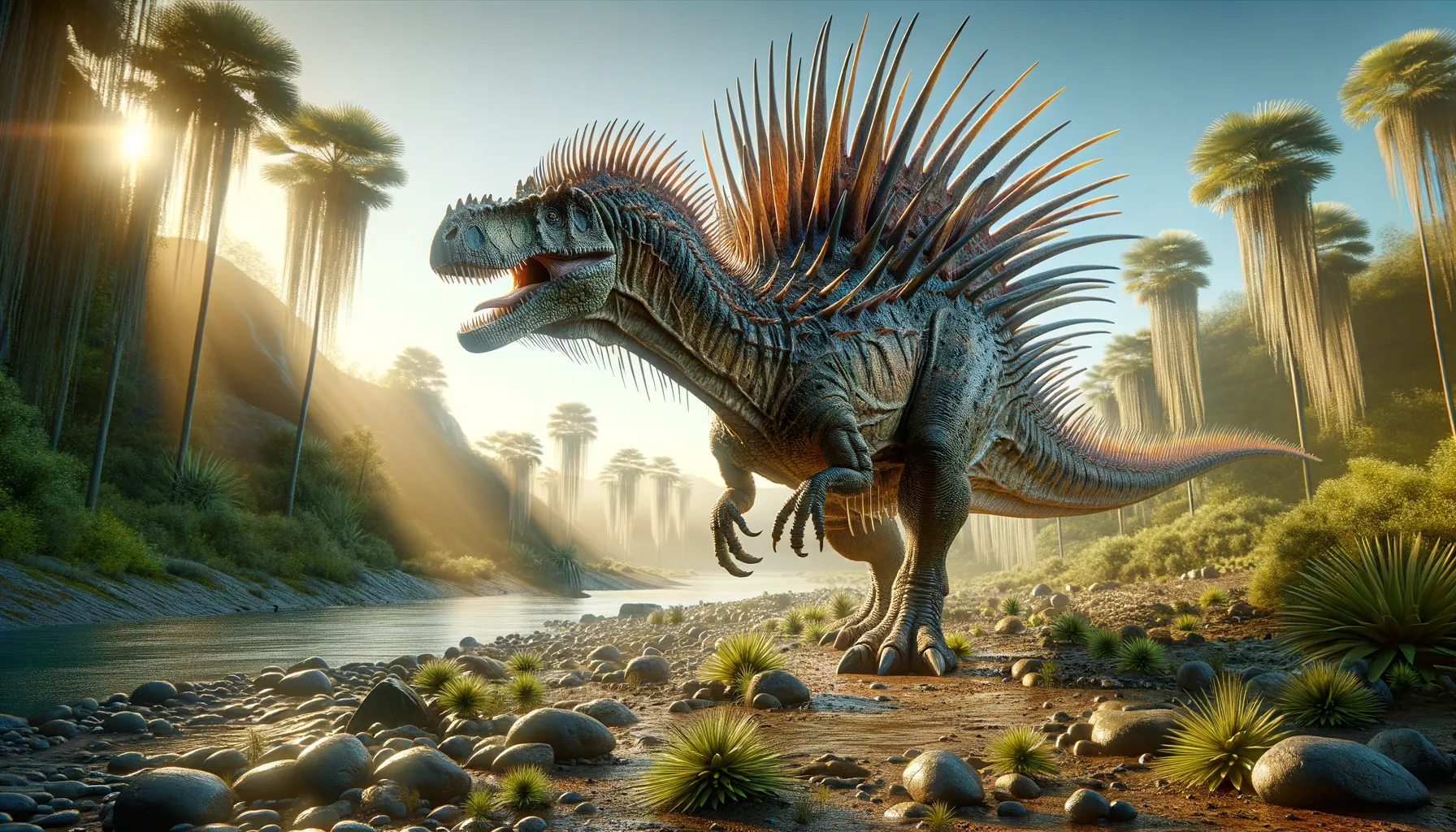
Hylaeosaurus
A spiky sentinel of ancient forests.
Period
Cretaceous
Length
Around 5 meters or 16 feet long.
Height
Approximately 1 meter at the hip.
Weight
Around 2,000 kilograms or 4,400 pounds.
Hylaeosaurus was an armored dinosaur that thrived during the early Cretaceous period. Known for its tough spiky armor and herbivorous lifestyle, it played a crucial role in the ecosystem of its time. Discovered in Southern England, Hylaeosaurus is one of the first dinosaur species ever identified. Its unique characteristics have helped scientists learn more about the evolution of armored dinosaurs.
Diet
Hylaeosaurus was a herbivore, feeding primarily on the abundant plants available in its environment. It likely used its beak and leaf-shaped teeth to strip foliage from trees and bushes.
Hunting
As a plant-eater, Hylaeosaurus did not hunt but may have used its spikes as a defense against predators. Its main focus would have been to find enough food to sustain its large size.
Environmental challenges
Hylaeosaurus lived in a world with fluctuating climate conditions, which would have impacted the availability of its plant-based diet. Predators, such as large carnivorous dinosaurs, posed a constant threat. Additionally, competition with other herbivores for food resources would have been another significant challenge.
Speed
Likely slow due to its heavy armor.
Lifespan
Estimated to be several decades.
First discovery
Discovered in 1832 by Gideon Mantell.
Fun Facts
- Hylaeosaurus was a medium-sized, armored dinosaur that lived during the early Cretaceous period, around 136 million years ago.
- It was first discovered in the Wealden clay of Surrey, England, and was one of the first dinosaurs ever named by the famous paleontologist Gideon Mantell in 1833.
- Hylaeosaurus means 'woodland lizard' which reflects its presumed forest habitat.
- This dinosaur was primarily a plant-eater, walking on all fours, and used its body armor and spikes to protect itself from predators.
- Despite its importance in early dinosaur discoveries, only a limited amount of fossil material has been found, making it a bit of a mystery to paleontologists.
- Hylaeosaurus measured about 5 to 6 meters long, but only a few complete specimens have been found, so these dimensions are estimated.
- The presence of armor plates along its back and tail suggests it had a powerful defense mechanism, perhaps similar in lifestyle to the modern-day armadillo.
Growth and Development
Young Hylaeosaurus would have grown rapidly to gain the protection of its armor and spikes. The species likely followed a life strategy of gradually reaching full size to safeguard against predators and to better compete for resources.
Habitat
This dinosaur inhabited lush, forested areas with access to water sources, allowing for a constant supply of vegetation. The dense forests provided ample cover and nesting sites, helping to shield it from larger predators. These habitats would have been teeming with other dinosaurs and various ancient wildlife.
Interaction with other species
Hylaeosaurus coexisted with other herbivorous dinosaurs, potentially forming mixed herds for protection from predators. It may have relied on other species to provide early warnings of danger, while its impressive armor deterred many attackers. Symbiotic relationships with smaller animals could also have helped with cleaning its armored plates.
Natural lifespan
The natural lifespan was likely around 30 to 40 years.
Reproduction
Hylaeosaurus likely laid eggs, similar to other dinosaurs of its time. Nesting would have occurred in secluded spots to protect the eggs from predators. Parents may have guarded the nests until the young were ready to fend for themselves.
Social behaviour
While precise social behavior is unknown, Hylaeosaurus may have traveled in small groups for added protection. Communication could have played a role in warning of predators or finding food sources. Its spiky armor reduced the need for aggressive, defensive behavior.
Fossil locations
Fossils of Hylaeosaurus have been found in southern England, particularly in the Wealden Group strata. These discoveries have provided valuable insights into early armored dinosaurs and their environments. Additional remains may yet to be uncovered, offering further understanding of its distribution and evolution.
